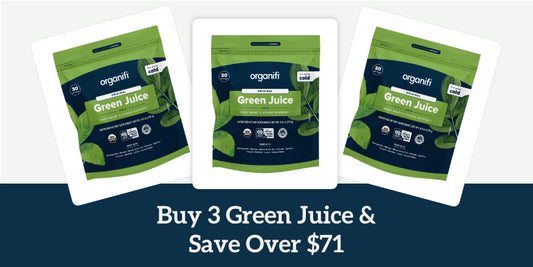Living an eco-friendly lifestyle is not just choosing paper over plastic (although -of course!) but also about the individual -and often small- choices we can make that ultimately add up to a lot!
Lowering your carbon footprint doesn’t mean killing your favorite “creature comforts”
A carbon footprint is the total greenhouse gas (GHG) emissions caused directly and/or indirectly by an organization, individual, specific event or product. It is the measure of our impact on earth; pretty much everything we use, do, and consume produces, releases, or contributes to CO2 emissions.
A lot of people fear that if they go eco-friendly they’ll have to give up their favorite coffee-shop drink (and mini-boost), change their clothes (to not-so-cute-ones) or have to turn into a semi-militant, soap-box carrying, not-so-welcome person. Other fear setting off their carbon footprint is overwhelming and just too much work. However, that couldn’t be farther from the truth:
Not all CO2 emissions are created equal and there’s a lot of easy things you can do about it - without sacrificing time or convenience!
This doesn’t have to be an either-or situation; you can have your eco-friendly cake and eat it too.
How to Decrease Your Carbon Footprint in 10 Simple Eco-friendly Ways:
First, determine your carbon footprint: all you have to do is find a reputable online calculator (we give you four!) to see how truly ‘eco’ your current eco-friendly practices are, areas that need improvement (the ones with the most emissions) and ultimately understand how your household and lifestyle measure up against the 2050 global goal.
Scientists believe that holding the global temperature rise to 2˚C or less would keep climate-change-related catastrophes (extreme droughts, wildfires, floods, heat, etc. that we know in California and the US all-too-well)
The Deep Decarbonization Pathways Project has determined that to achieve that goal everyone on planet earth will have to lower their carbon footprint to 1.87 tons by 2050 on average. At the moment, the mean U.S. per capita carbon footprint is 18.3!
As you can see, we have a challenge in our hands. Calculate your footprint:
- Climate Care Calculator
- U.S. Environmental Protection Agency
- Global Footprint Network
- The Nature Conservancy
Done? Let ’s get to offsetting!
Carbon Offset: Food
#1 Limit or Stop Eating Beef and Lamb
I know what you’re going to say: “I thought you said I wouldn’t have to give up my creature comforts!” and you’re right - we did. However, it wouldn’t be right to ignore that meat and dairy are responsible for 14.5% -18% of the US and global CO2 emissions and that cattle beef and lamb are the largest greenhouse gas producers.
According to the 4-star-rating charity earthday.org: “if the entire U.S. did not eat meat or cheese for just one day a week, it would be the equivalent of not driving 91 billion miles – or taking 7.6 million cars off the road.”
That’s a great reason to try Meatless Monday! So one simple way you can live more eco-friendly and lower your CO2 emissions is to cut beef (or all meat!) for three meals a day, just one day a week!
Go for the gold and quit it all, but if you want to keep it simple: just commit to one no-meat day a week.
#2 Consider Chicken
A vegan or vegetarian diet has the smallest carbon footprint available, but did you know that switching from beef to chicken can also have an impact? Connected to #1 above, you may be surprised to learn that chicken produces almost a quarter the carbon footprint of red meat (read beef.)
The amount of water, food, and energy that meat takes to produce is very high, so it might still be good to consider more whole vegetarian meals a week, and fewer animal-protein-based meals, with beef being the proportionally smallest.
#3 Strive for Sustainable and Local (instead of just organic)
Organic and sustainable food products seem like interchangeable synonyms, but that’s not always true. Organic products use pesticide-free agriculture. Sustainable agriculture, on the other hand, considers economic, social, and other eco-friendly factors.
There is no “sustainable” label yet, but you can simply make it a point to buy from a farmer’s market or if you don’t have one available, then an 80-20 ration of local and seasonal produce over foreign imports. Research estimates that eating only locally grown food for one year could save CO2 emissions equivalent to driving 1,000 miles.
#4 Plan Your Meals to Avoid Food Waste
If you’ve been meal-planning and prepping to stay on top of your workouts, diet, or just to keep the kitchen under control, you’ve not only made your life easier - you’ve been helping save the planet. It’s simple:
Wasted food is wasted energy, wasted water, and more greenhouse gas emissions.
4.5 million tons of food are wasted every year in the U.S. and 25% of it is edible, that’s not very socially responsible, but also not eco-friendly. Agriculture requires a lot of fuel and water to produce, transport, and store. All the fossil fuels used to produce that food were wasted when they go unconsumed.
Additionally, food when food decomposes it produces methane which is 20X more potent than carbon dioxide. Landfills in the U.S. are responsible for 20% of all of the country’s methane emissions.
Solution? Plan your meals, shop weekly or biweekly, and avoid food waste!
Carbon Offset: Household
#5 Ditch Single Use Plastic Everything
If it doesn't have to be single-use, then go for the reusable option instead! There are multiple items we often forget about that are single use but don’t need to be:
- Drop Paper Towels: switching to 100% organic cotton or 100% bamboo, absorbent kitchen towels is now a possibility. These substitutes can be washed and used repeatedly.
- Eliminate the grocery bag: make a one-time investment in multiple reusable tote bags that can be rolled into a tiny bag. You can throw them in the car or multiple purses and avoided both paper and a plastic bag when you do some impromptu shopping.
- Switch to a Reusable cup: whether you buy the reusable cup at Starbucks or go for a glass portable coffee cup (like keepcup) avoiding single-use plastic, styrofoam, and even carton, you lower your emissions. All are great eco-friendly options.
- Get a reusable water bottle: preferably made of glass or metal, that can hold your hot or cold beverage and can be refilled over and over. There’s a lot of gas that goes into producing plastic, and a lot of it just ends up in landfills or oceans.
- Get Reusable Utensils: made of bamboo wood reusable utensils will drop your plastic use on the go dramatically, while metal straws make a better choice for abled people when compared to plastic straws.
#6 Consider Packaging
Whenever possible try to shop for the least packaged version of your food, meaning instead of a plastic-wrapped head of lettuce, a fresh head packed in a reusable net of your own. Less packaging, the less waste, lower greenhouse gas emissions.
There will be times you won’t be able to avoid plastic, however, check your products to see if there are other brands or alternative with compostable, eco-friendly, easily recycled, or little to no packaging available. You’ll be surprised!
All or our future Red Juice superfood powders will now come in an eco-friendly canister!
#7 Switch To White Trash Bags
Some waste is inevitable, but did you know the pigment in black trash bags isn’t biodegradable? They aren’t recyclable plastic, either, so essentially they will never break down in a landfill. White plastic trash bags can be recycled and some facilities may have their own program for them.
#9 Switch On the LEDs
Changing the light bulbs in your home, business, or office from energy-sucking incandescent lights to LEDs can reduce your CO2 emissions up to 1,300 pounds per bulb! The amount is calculated over the lifespan of each bulb. LEDs have really advanced, you can get them in warm yellowish colors or bright blue-white ones, they last up to ten years and are not filled with toxic chemicals. Very healthy and eco-friendly, not to mention nice dollar savings!
Carbon Offset: Transportation
#8 Choose Eco-friendly Transportation
Choose public transportation, carpooling, biking, and walking whenever possible, as greenhouse emissions are instantly reduced per each car not driving around or getting stuck in traffic. It’s not as hard as it seems and you can use commute time to talk to friends, read a book, get some cardio, and feel good.
#9 Avoid Air Travel
No, you don’t have to give up vacations. Just consider using trains whenever possible, they’re usually more eco-friendly, have extra points for massive train-pooling (get it?) and you reduce or avoid the huge environmental cost of aircraft fuel.
#10 Offset Travel Footprint with Donations
Can’t avoid travel? No problem, simply calculate your trip’s footprint with a calculator (we like Climate Care linked above) and make a donation to your favorite eco-friendly nonprofit, according to the amount suggested by the app. Any organization that plants trees is a good one!
Bottom line:
Next to taking care of your health, few things are more valuable than taking care of the health of the planet. Kudos to you for caring - and trying. Having a more eco-friendly lifestyle can be as simple as ordering chicken instead of beef, trying meatless Mondays, carrying a reusable tote bag in your purse or bag, investing in bamboo utensils, or just changing a light bulb.
It’s all about making a commitment and going for progress and not perfection. Remember, we’re in this together.




